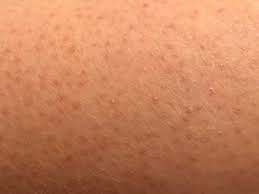The European Medicines Agency (EMA) authorized this August 18 a method for applying the vaccine against monkeypox that will allow more people to be immunized, in times when the resource is limited.
After the agency’s endorsement, European Union (EU) countries will be able to administer the Imvanex vaccine intradermally (in the upper layer of the skin) instead of subcutaneous injection, as until now, and thus use only a fifth of the dose.
The EMA’s Emergency Task Force (ETF) reviewed data on intradermal administration of the Imvanex monkeypox vaccine, which until now was only authorized subcutaneously (under the skin).
The EMA based its decision after reviewing data from a phase 2 clinical trial involving around 500 adults, which compared the vaccine administered intradermally or subcutaneously, in 2 doses with a 4-week interval between each dose.
People who received the vaccine intradermally received one-fifth (0.1 ml) of the subcutaneous dose (0.5 ml), but produced antibody levels similar to those who received the higher subcutaneous dose.
However, the agency warned that there was an increased risk of local reactions (for example, longer-lasting redness and thickening or discoloration of the skin) after intradermal injections.
The ETF noted that there is no information available on the maximum number of 0.1 ml doses that can be withdrawn from the authorized presentation (0.5 ml suspension). But he stressed the importance of administering intradermal injections correctly, recommending that only experienced health professionals administer them.
“Taking all these considerations into account, country authorities may decide to use Imvanex as an intradermal injection at a lower dose as a temporary measure to protect people at risk during the current monkeypox outbreak while vaccine supply “remains limited,” the EMA statement said.
The Imvanex vaccine was first authorized in exceptional circumstances in 2013 for protection against smallpox. Following a request to expand its use, it was authorized to protect against monkeypox on July 22, 2022.
The product “prepares the body to defend against infection with the variola (smallpox), monkeypox and vaccinia viruses,” and “contains an attenuated form of ’modified vaccinia virus Ankara’ (MVVA), which is closely related to the viruses of smallpox and monkeypox, but does not cause disease in humans and cannot reproduce in human cells,” the EMA statement explained.
“When a person receives the vaccine, the immune system recognizes the vaccine virus as ’foreign’ and produces antibodies against it. When the person later comes into contact with similar viruses, antibodies and other components of the immune system will be able to kill those viruses and help protect against disease,” he continued.
Days ago, the FDA had endorsed the use of the JYNNEOS vaccine intradermally for people aged 18 years and older, since this route requires less product with similar benefits, according to a previous study.
















